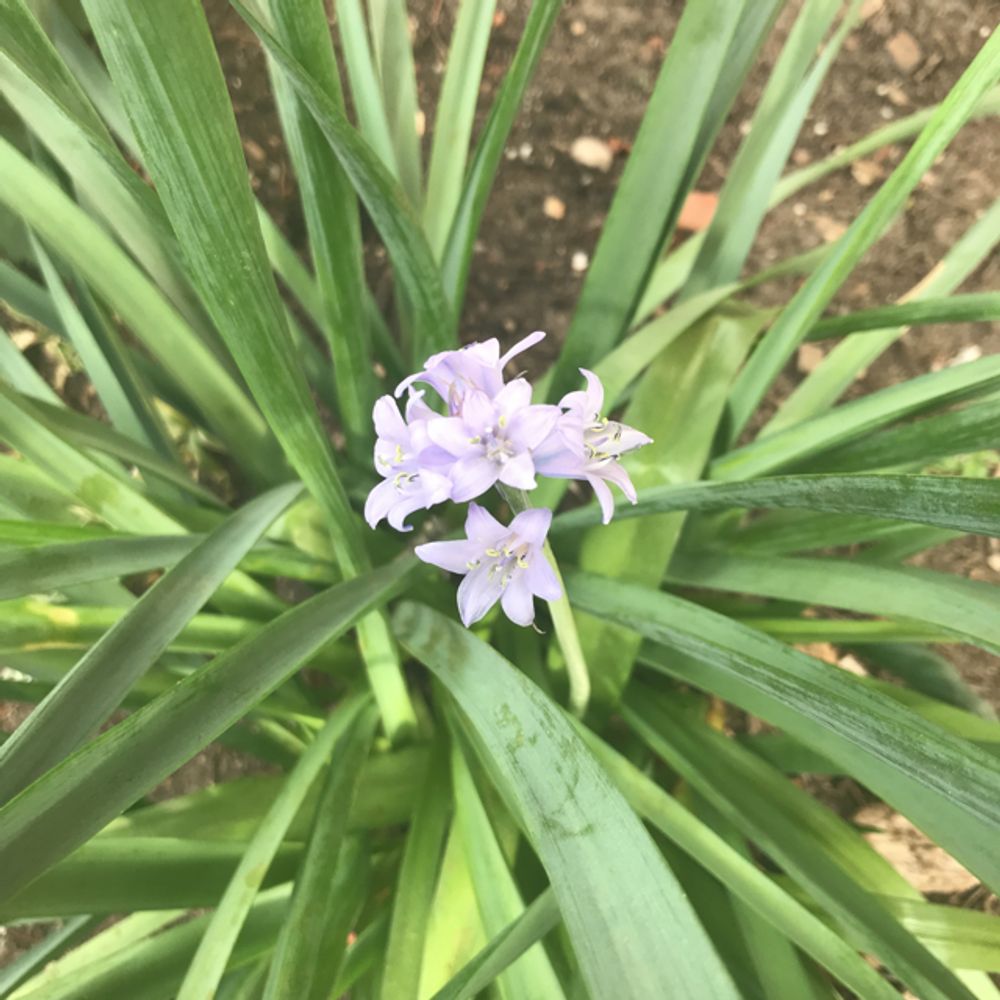Spanish hyacinth
(Brimeura fastigiata)

Description
Brimeura fastigiata, commonly known as the Spanish hyacinth or rush-leaved squill, is a charming flowering plant that belongs to the family Asparagaceae. Native to the Iberian Peninsula, this perennial herbaceous plant has gained popularity among gardeners and plant enthusiasts for its stunning appearance and ease of cultivation. In this article, we will delve into the various aspects of Brimeura fastigiata, including its taxonomy, morphology, habitat, cultivation, and unique characteristics. Taxonomy Brimeura fastigiata is classified under the kingdom Plantae, division Magnoliophyta, class Liliopsida, order Asparagales, and family Asparagaceae. The genus name, Brimeura, is derived from the Spanish botanist Dámaso Martínez Brime, who contributed significantly to the study of plants in the 19th century. The species name, fastigiata, refers to the plant's erect growth habit. Morphology Brimeura fastigiata showcases an exquisite combination of form and color. The plant typically grows to a height of 20-30 centimeters (8-12 inches) and features long, narrow leaves that are rush-like in appearance. These leaves arise from an underground bulbous structure, which serves as the plant's storage organ. The bulb is usually brown and covered with fibrous tunics. In spring, Brimeura fastigiata produces erect flower stalks adorned with bell-shaped flowers. The flowers exhibit a range of hues, including shades of lilac, blue, or pink, with darker veins running through them. Each flower consists of six tepals, which are petal-like structures that cannot be differentiated into petals and sepals. The stamens and pistil, responsible for reproduction, are prominently displayed in the center of the flower. Habitat and Distribution Brimeura fastigiata is endemic to the Iberian Peninsula, which comprises Spain and Portugal. Within this region, it can be found growing naturally in a variety of habitats, including open woodlands, scrublands, rocky slopes, and meadows. The plant thrives in well-drained soils with a preference for limestone-rich substrates. Its natural range extends from the lowlands to mountainous regions, reaching altitudes of up to 1,500 meters (4,920 feet) above sea level. Cultivation Gardeners and plant enthusiasts are increasingly drawn to Brimeura fastigiata for its ornamental value and adaptability. Cultivating this plant can be a rewarding experience, as it requires minimal care and adds a touch of elegance to any garden or landscape. To successfully grow Brimeura fastigiata, a few key considerations should be taken into account. The plant prefers a sunny or partially shaded location, where it can receive adequate sunlight for at least a few hours a day. Well-drained soil is crucial to prevent waterlogging, as excessive moisture can be detrimental to the plant's bulbous structure. In terms of climate, Brimeura fastigiata is adaptable and can thrive in both temperate and Mediterranean climates. Propagation of Brimeura fastigiata can be achieved through several methods, including division of bulbs and sowing of seeds. Dividing bulbs is the most common and reliable method. It is best carried out in early autumn, when the plant is in a dormant state. The bulbs should be carefully separated, ensuring that each division contains sufficient roots and bulb scales. These divisions can then be replanted at an appropriate depth, usually 5-8 centimeters (2-3 inches) below the soil surface. Unique Characteristics Brimeura fastigiata possesses several intriguing characteristics that set it apart from other flowering plants: Early Blooming: One of the most captivating features of Brimeura fastigiata is its early blooming period. In regions with mild winters, the plant can start flowering as early as late winter or early spring, often before many other plants have begun their growth cycle. This early burst of color makes it a cherished addition to gardens, bringing a sense of rejuvenation and beauty after the dormant winter months. Fragrance: The flowers of Brimeura fastigiata emit a delicate, sweet fragrance that further enhances its appeal. The scent is particularly noticeable during warm, sunny days, attracting pollinators such as bees and butterflies. The alluring fragrance adds an olfactory dimension to the overall sensory experience of observing and interacting with this plant. Naturalizing Ability: Brimeura fastigiata has a remarkable capacity to naturalize and spread in suitable growing conditions. Once established, the plant can readily self-seed, forming clusters and colonies over time. This naturalizing behavior can create stunning displays of massed flowers, transforming a garden or natural area into a captivating spectacle. However, it's important to monitor its growth and prevent overzealous spreading in controlled garden settings. Resilience: Brimeura fastigiata is known for its resilience and adaptability. It is relatively tolerant of drought conditions, making it suitable for regions with sporadic rainfall or dry summers. Additionally, it can withstand moderate frosts and is considered hardy in USDA Hardiness Zones 6-9. Its ability to thrive in various soil types, including sandy or clay soils, adds to its versatility and makes it a viable choice for a range of garden environments. Attractive Foliage: While Brimeura fastigiata is primarily admired for its enchanting flowers, its rush-like foliage also contributes to its overall aesthetic appeal. The slender, deep green leaves form graceful clumps that provide an attractive backdrop to the colorful flowers. Even when not in bloom, the foliage retains its visual interest, adding texture and verticality to garden beds or borders. Conservation Status In terms of conservation, Brimeura fastigiata is not currently listed as a threatened or endangered species. However, like many wild plants, its natural habitats face potential threats due to urbanization, habitat loss, and agricultural practices. It is crucial to preserve and protect the diverse ecosystems where Brimeura fastigiata thrives to ensure its long-term survival and continued enjoyment by future generations. Conclusion Brimeura fastigiata, with its alluring flowers, elegant foliage, and adaptability, is a captivating addition to any garden or landscape. Its early blooming period, delightful fragrance, and naturalizing tendencies make it a popular choice among plant enthusiasts. By understanding its taxonomy, morphology, habitat, cultivation, and unique characteristics, we can appreciate the beauty and significance of this remarkable flowering plant. Whether in a garden or in its natural habitat, Brimeura fastigiata enchants observers and contributes to the rich tapestry of botanical diversity.
Taxonomic tree:







